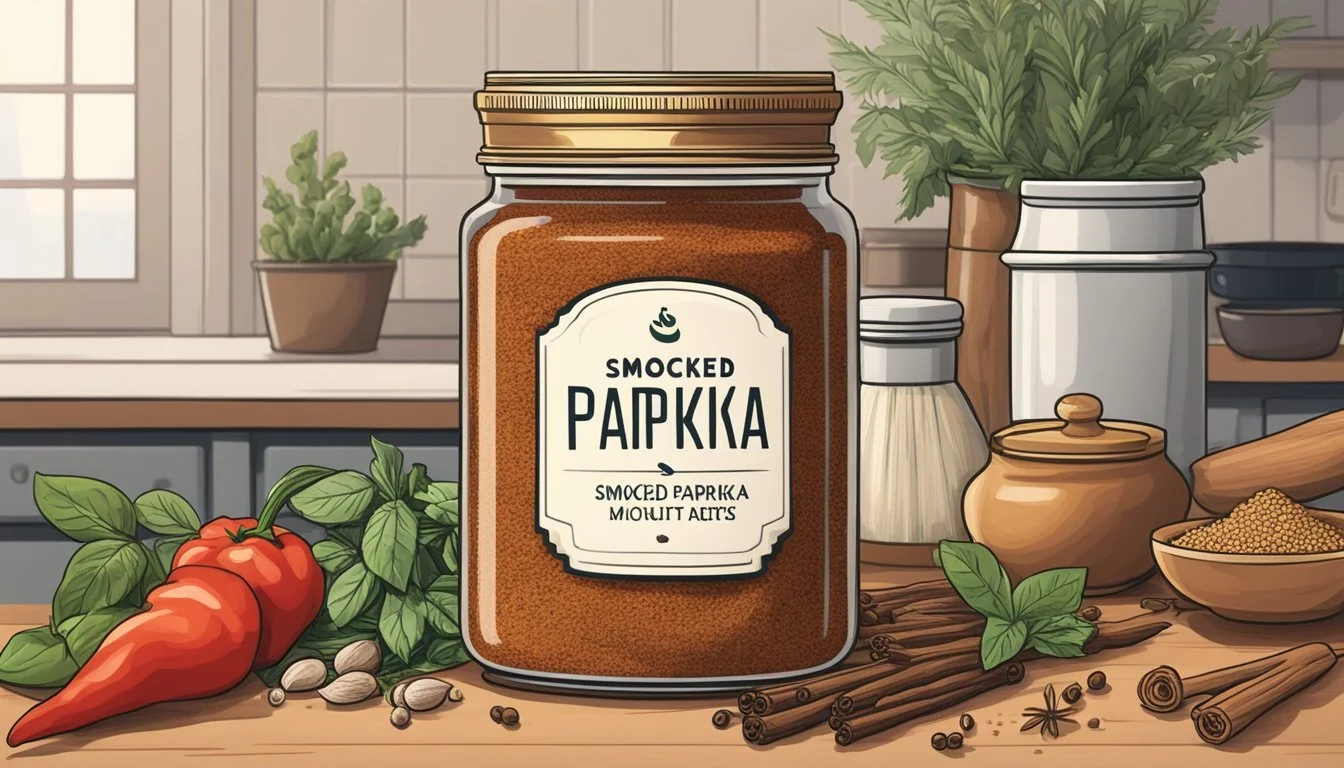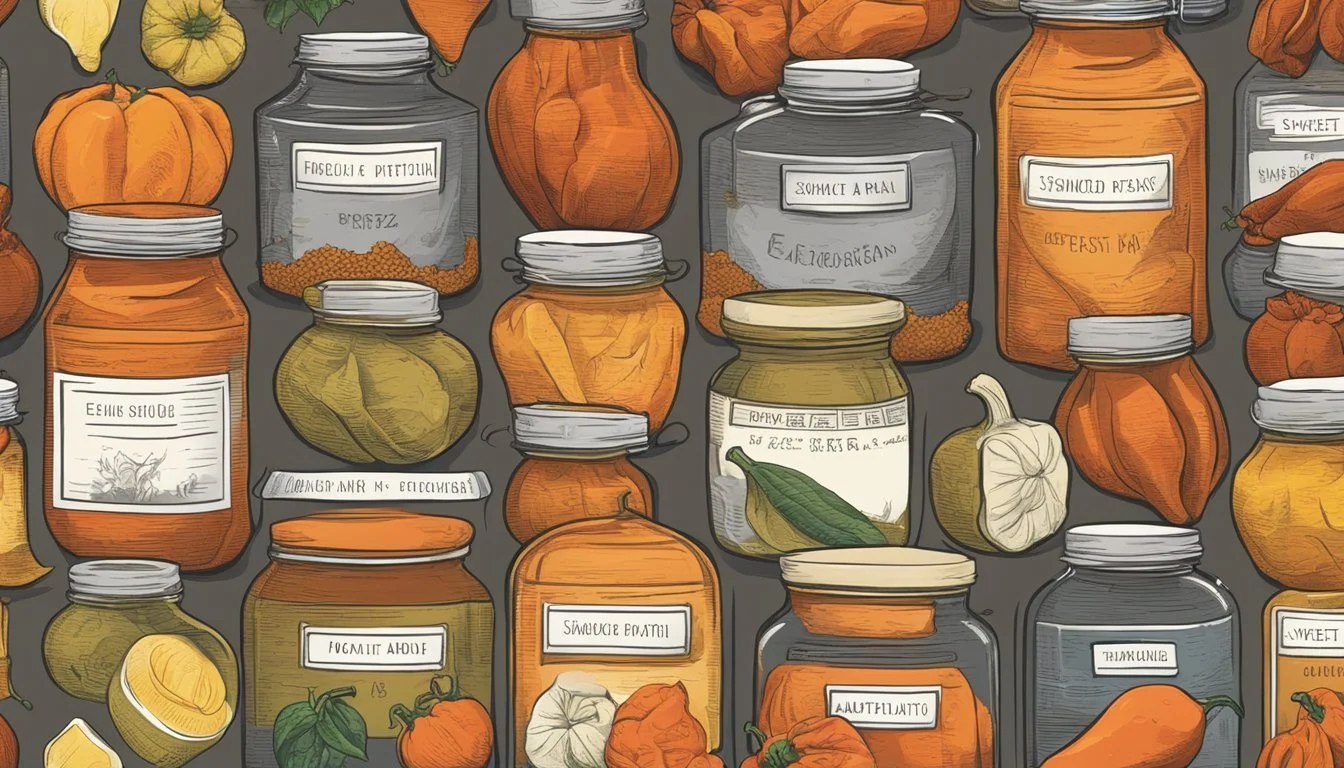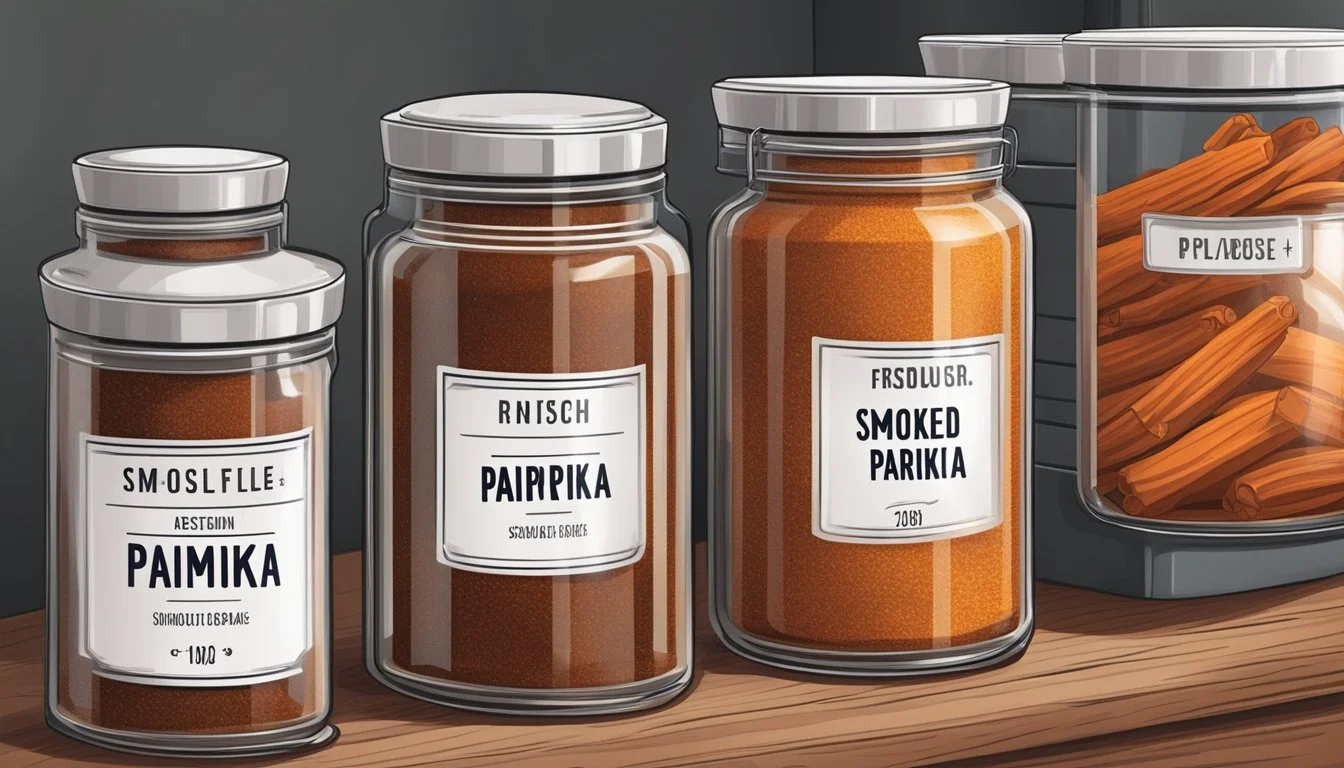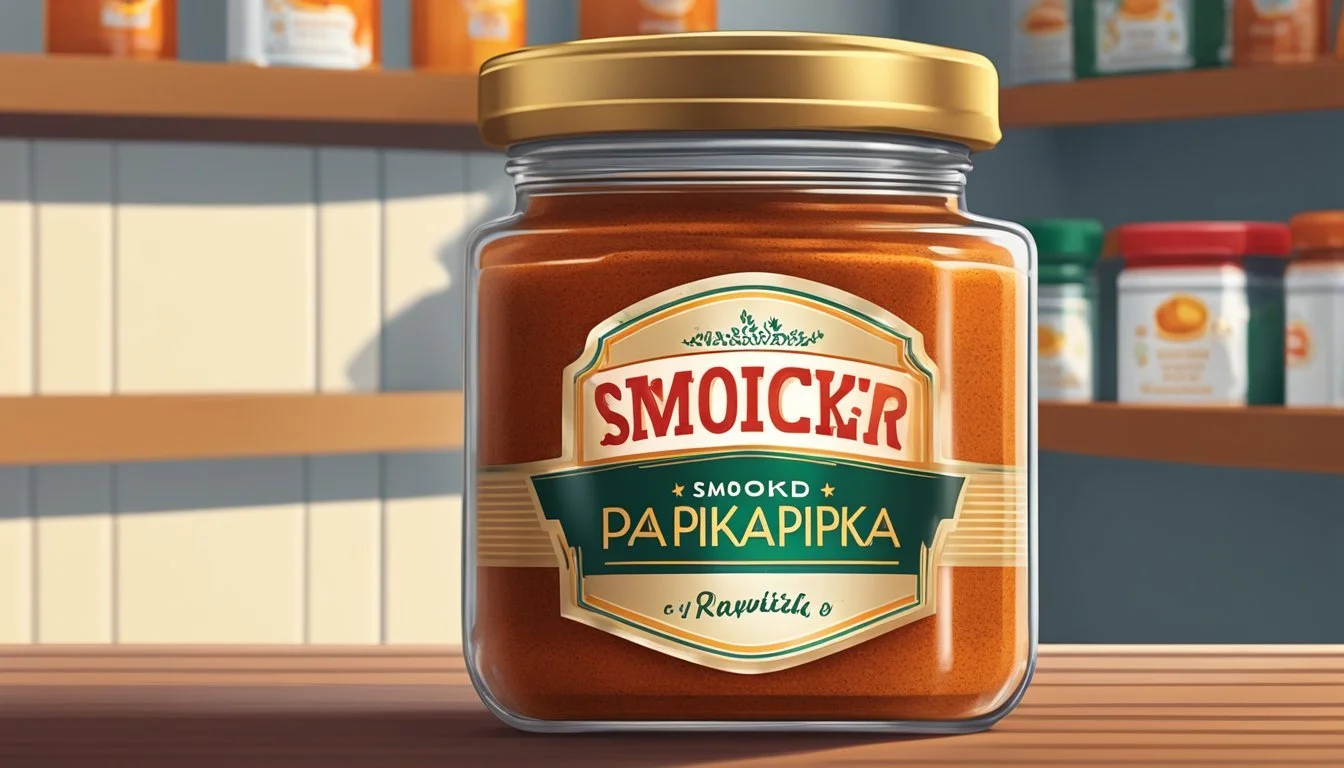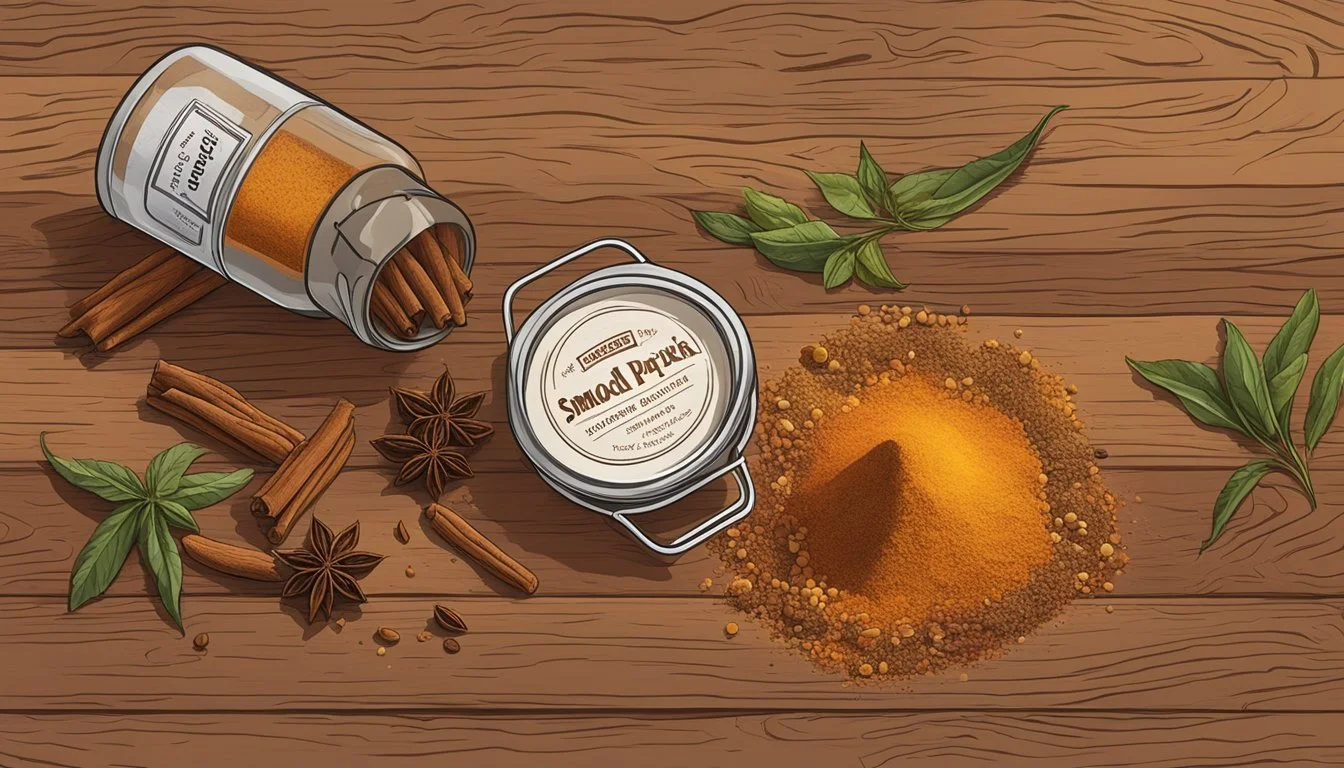Does Smoked Paprika Expire?
Storage Tips and Shelf Life Explained
Smoked paprika, a beloved and versatile spice, often brings a rich, smoky flavor to various culinary creations. A question that arises frequently among home cooks and culinary enthusiasts is whether smoked paprika expires. While smoked paprika doesn't spoil in the traditional sense, its flavor and potency diminish over time, particularly if not stored correctly.
Stored in a cool, dark place such as a pantry or a refrigerator, smoked paprika can maintain its quality for about six to twelve months, with its optimal flavor lasting up to three years when unopened. To extend its shelf life even further, some prefer to keep it in the freezer. Recognizing signs of deterioration, such as a faded color or a musty smell, is crucial to ensure you're using fresh and flavorful spices in your dishes.
Incorporating smoked paprika into your spices collection can elevate your cooking, bringing depth to stews, soups, and marinades. However, to get the most out of this spice, proper storage and timely usage are key. Knowing when to replace your smoked paprika will ensure your recipes always benefit from its full, vibrant flavor.
Understanding Smoked Paprika
Smoked paprika, known for its distinct smoky flavor, is a staple in both Spanish and Hungarian cuisines.
This spice is made by drying and smoking peppers before grinding them into a powder. The smoking process imbues the paprika with a rich, smoky aroma and taste.
There are several types of smoked paprika, including sweet paprika and hot paprika. Sweet paprika offers a milder flavor, while hot paprika adds a bit of heat.
The color of smoked paprika can vary from bright orange-red to deep red, depending on the type of pepper used.
To maintain its vibrant color and potent flavor, it is best stored in a cool, dark place.
Smoked paprika can enhance various dishes, from stews and soups to grilled meats and vegetables. It adds depth and complexity to recipes, making it a versatile and essential spice in many kitchens.
The Composition and Types of Paprika
Paprika is a versatile spice made from ground red peppers, available in various types that differ in taste, color, and heat level. Understanding these types helps in selecting the right paprika for culinary purposes.
Smoked Paprika Variants
Smoked paprika, also known as pimentón, is made by drying peppers over oak wood fires. This process imparts a distinctive smoky flavor to the spice. There are three main variants of smoked paprika:
Dulce (Sweet): Mild and rich in red color, it's often used for its sweet flavor.
Agridulce (Bittersweet): A balanced blend of sweet and spicy, ideal for versatile cooking.
Picante (Hot): Provides heat along with the smoky note, similar to hot peppers.
These variants cater to different recipes, from marinades to soups, enriching the dish with their unique smoky essence.
Sweet, Spicy, and Colorful Attributes
Paprika comes in multiple forms beyond the smoked varieties. Sweet paprika is mild with a bright red color, commonly used as a garnish due to its vibrant appearance. Spicy paprika is similar to cayenne pepper and adds a strong kick to dishes.
The color of paprika can range from bright red to deep brown, indicating its flavor intensity. Redder paprika usually signifies a sweeter taste, while darker shades are often more robust and smoky.
The spice's versatility allows it to be a staple in many culinary traditions, enhancing flavors without overwhelming them.
Health Benefits of Paprika
Paprika offers several health benefits, mainly because it contains essential vitamins and compounds. It is rich in vitamin A, crucial for vision and immune function, and vitamin E, important for skin health and cellular protection.
Paprika also contains capsaicin, the compound responsible for the heat in spicy paprika. Capsaicin has been shown to have anti-inflammatory and pain-relieving properties.
Additionally, paprika's antioxidants help combat oxidative stress, contributing to overall health. Including paprika in your diet can thus provide a flavorful way to boost nutrient intake.
Signs and Factors of Spices Expiration
Identifying when spices have expired involves recognizing specific spoilage indicators and considering the impact of storage conditions. Proper storage can significantly extend the shelf life of spices by maintaining their quality and preventing the most common signs of spoilage.
Recognizing Spoilage
The first sign of expired spices is usually a noticeable off smell.
Fresh spices have a strong, pleasant aroma. When they spoil, this smell may become faint or sour.
Changes in color are also critical. Smoked paprika, for instance, tends to lose its vibrant red hue and becomes dull.
Clumping is another indicator; it can occur due to moisture exposure.
A good rule of thumb is to regularly inspect spices for signs of bug contamination, which can appear as small holes in packaging or the presence of tiny insects.
Influence of Storage Conditions
Storage conditions play a crucial role in determining a spice’s shelf life.
Spices should be kept in a cool, dark place. Light and heat can degrade both flavor and color.
While storing smoked paprika in the pantry works if it's cool and dark, refrigeration can help prolong its shelf life by keeping the temperature stable.
For even longer preservation, freezing spices in airtight containers shields them from both heat and moisture, extending their quality for up to two years.
Choosing proper packaging, like resealable airtight containers, prevents air and moisture from compromising the spice’s integrity.
Ensuring quality spices from the start, such as freshly ground options, enhances their longevity and potency.
How to Store Smoked Paprika Properly
Proper storage of smoked paprika is crucial to maintaining its flavor and color. Key aspects involve choosing the right location, using suitable containers, and considering extended storage methods.
Ideal Storage Conditions
Smoked paprika should be kept in a cool, dark place. This helps preserve its flavor and reddish tint. High temperatures can cause a loss of flavor, while exposure to light can degrade the color.
A pantry or cupboard away from the stove or other heat sources is ideal. Ensuring the storage area is dry will also help prevent moisture from affecting the spice's quality.
Airtight Containers and Locations
Using airtight containers is essential to keep smoked paprika fresh. Opt for glass jars or metal tins that can seal tightly. Plastic containers can also work if they are durable and seal well.
Avoid storing paprika in its original packaging once opened; transfer it to an airtight container to protect it from air and humidity. Shelf space in a pantry or cupboard works best.
Extended Storage Solutions
For long-term storage, refrigeration or freezing can be beneficial. Refrigerating smoked paprika can prolong its shelf life by maintaining a cool temperature. Make sure it remains in an airtight container to prevent it from absorbing fridge odors.
Freezing is another option, particularly if the paprika is not used frequently. Portion it into smaller, airtight containers or sealed bags to avoid repeated thawing and refreezing.
Maximizing Paprika's Shelf Life
Smoked paprika can maintain its quality longer with proper storage practices. Key factors like avoiding moisture and contamination, and positioning within a spice rack are crucial.
Optimal Use of Spice Rack
To prolong the shelf life of smoked paprika, store it in a cool, dark place. Spice racks or cabinets away from heat sources like stoves and ovens are ideal. Heat can degrade the spice's quality quickly. Ensure the paprika is stored in airtight containers to minimize exposure to air and humidity.
A well-organized spice rack keeps the paprika easily accessible and prevents unnecessary exposure to light, which can weaken its potency. Rotate the spice regularly to ensure older products are used first.
Avoiding Moisture and Contamination
Moisture is the enemy of smoked paprika. Keep the spice in airtight containers to protect it from humidity and potential contamination. Glass jars with tight-fitting lids or vacuum-sealed bags work well.
When handling paprika, use dry utensils to avoid introducing moisture. Contamination can accelerate spoilage and degrade the spice's freshness. For longer storage, consider putting the paprika in the freezer; this effectively prevents heat and moisture exposure, preserving the spice for up to two years.
By following these steps, you can enjoy the rich flavor of smoked paprika for an extended period.
Incorporating Smoked Paprika in Cooking
Smoked paprika adds a unique, smoky depth to various dishes. It enhances the flavor of meats, stews, vegetables, and sauces, making it indispensable in many culinary creations.
Flavor Enhancement Tips
Smoked paprika's intensity and aroma can transform simple recipes. Sprinkling it on grilled meats before cooking infuses the dish with a rich, smoky flavor. For a depth of taste in stews, add it during the simmering process.
In sauces, blend smoked paprika early to allow its potency to meld with other ingredients.
For roasted vegetables, a light dusting before baking elevates their natural flavors. Mixing it with olive oil and lemon juice creates a robust marinade, perfect for fish or chicken.
Matching Smoked Paprika with Foods
Smoked paprika pairs exceptionally well with hearty ingredients. In stews, it complements the richness of beef or lamb. When used with pork or chorizo, it highlights the meat's savoriness.
Vegetable dishes benefit from its subtle heat, particularly roasted bell peppers, potatoes, and squash. In sauces, it balances well with tomato-based mixtures, enhancing both the color and taste.
For a unique twist, combine smoked paprika with garlic and lemon in dressings or rubs. Its versatility also makes it an excellent addition to barbecue rubs, adding an unmistakable smoky depth to grilled dishes.
Understanding Ground Spices' Characteristics
Ground spices, such as smoked paprika, have unique qualities that affect their use in cooking. Key factors include texture and freshness, as well as distinctions between ground and whole spices.
Texture and Freshness
Ground spices exhibit a fine, powdery texture that integrates readily into dishes, offering immediate flavor. This texture is achieved through the grinding process, which exposes more surface area to air and light.
Freshness of ground spices is crucial for maximum flavor. Over time, ground spices lose potency due to oxidation. Storing them in airtight containers away from heat and light helps preserve their aroma and taste. Even under optimal conditions, they usually maintain peak freshness for 6 to 12 months.
Ground Paprika vs. Whole Spices
Ground paprika and whole spices differ notably in shelf life and potency. Ground paprika, being finely milled, loses its flavor faster than its whole counterparts. While ground paprika remains safe to consume for up to three years, its flavor diminishes after one year.
Whole spices can retain their potency for several years, as their structure protects the essential oils from rapid degradation. For sustained aroma and flavor, grinding spices just before use is recommended. The difference in longevity is largely due to the exposure of volatile compounds to oxidation, which occurs more rapidly in ground form.
Comparative Shelf Stability
Smoked paprika offers a unique set of characteristics when it comes to shelf stability, particularly when compared to other spices and in understanding its expiry and best-before dates.
Paprika vs. Other Spices
Smoked paprika generally has a longer shelf life compared to many other common spices like chili powder and cumin. Ground varieties of paprika, including smoked, tend to maintain optimal quality for 2-4 years, while whole paprika can last up to 5 years.
In contrast, spices such as oregano and thyme have a shelf life of 1-3 years, depending on whether they are ground or whole. Cayenne pepper and chili powder often degrade faster, lasting around 1-2 years. Proper storage, such as keeping spices in cool, dark places, can significantly affect these durations, making smoked paprika a comparatively durable option.
Analyzing Expiry Dates Effectively
Understanding the expiry date and best before dates on smoked paprika is crucial. These dates indicate the spice's peak quality rather than safety. When stored properly in a pantry (cool, dark place), smoked paprika can maintain its flavor for about 3-6 months. Refrigeration can extend its shelf life to 6-12 months.
Signs that smoked paprika has expired include a loss of its vibrant red color and a decline in its smoky aroma and taste. Regularly checking these factors helps in determining when it's time to replace your paprika.
By maintaining proper storage conditions and regularly evaluating the spice's quality, users can maximize the shelf life of smoked paprika.


